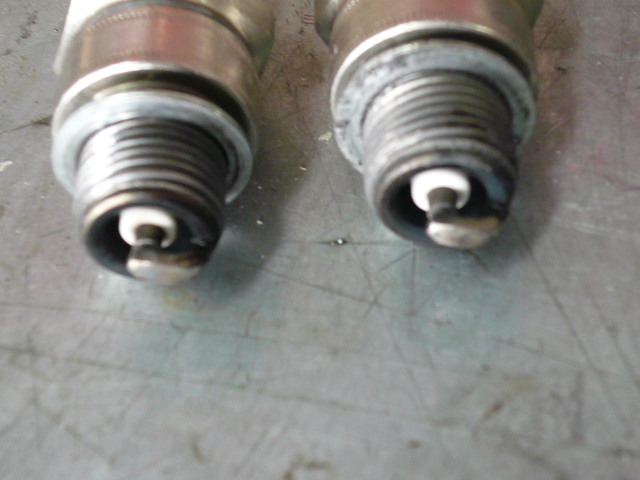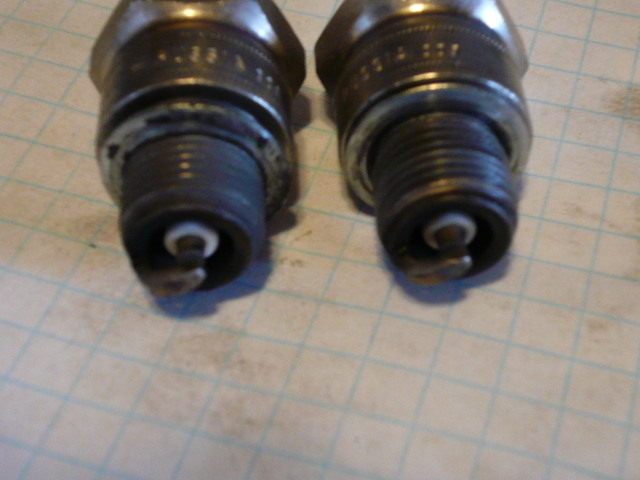I have been looking more into the CHT situation I have. One thought is I shortened the harness that came with the gauge, which according to what I have read, should make no difference. I found this on ratwell.com, written by Richard Atwell:
"Cylinder Head Temperature:
Another popular gauge is the Cylinder Head Temperature (CHT) gauge.
This gauge measures the head temperature. Some folks think that reading the oil temperature is enough to determine the engine temperature but it's not. Head temperatures are related to the work that the engine has to perform and will increase more quickly than the oil temperature. As the engine pushes the bus through the air at faster speeds, all of the frictional forces including the friction of the rotating engine parts resist that forward motion. Head temps increase further when you climb hills as try to maintain your speed.
The aircooled engine requires a steady flow of air for cooling and a working thermostat system. When the thermostat breaks, there is a failsafe mechanism to ensure the engine doesn't overheat. However, it's simply a spring and if not checked to make sure it's working you may end up with an overheated engine anyway. If you are missing the flaps all together, although the heads will be cooled, the oil cooler will not be so you must at least have the flaps in place!
The #1 problem with Type 4 engine is a sunken valve just like the Type 1 engine. This is due to overheating the heads because the driver was unaware of the problem and over several hundred or thousand miles the head slowly failed and the final result was lost compression on one or more cylinders or worse, a broken piston because the head of the valve fell off.
The CHT senders consist of a K-type thermocouple that is placed under the spark plug. The thermocouple itself is a pair of two dissimilar metals in the form of wires that produce a mV signal when heated. The junction near the spark plug is called the hot junction and the other end is called the cold junction. The ring under the spark plug is a simple ring terminal and the metal that it is made from doesn't affect the thermocouple according to Seebeck's law of thermocouples: it merely exists to transfer the heat from the plug to the thermocouple.
The voltage produced in the thermocouple is based on the temperature of the hot junction near the ring terminal relative to the temperature of the cold junction at the end of the connector that leads to the CHT gauge. The gauge and cold junction are usually calibrated around 72F. What matters is not what length of gauge of wire is used between the thermocouple and the gauge or which cylinder the ring terminal should be under (although #3 is ideal) or where the thermocouple should be located (although under the spark plug is the only correct location for VWs) but what temperature the engine compartment is at.
Because the thermocouple is calibrated for 72F, the readings will only be accurate at that temperature in the engine compartment. If it's colder, the CHT temperature will appear higher giving a false impression that the engine has fully warmed up. If the temperature is higher, say 100F or more, then the reading will be lower by 30F (the difference between the engine compartment temp and the calibration temp). This is unfortunate because the very time when we want to know that the engine is too hot, it is actually low by 30-40F because of the outside temperature.
The reason this happens is that the VDO CHT wiring harness contains a 1 ft. length of thermocouple wire and the rest of it is regular wire so the cold junction will be in the engine compartment. If you manage to run the thermocouple portion of the wiring through the engine tin and expose it outside of the bus you have similar temperature calibration problems because of the airflow and exhaust heat, etc. Even if VDO ran thermocouple wire all the way to the dash, then the cabin temperature at the cold junction would still affect the the readings (hot day, low reading). You shouldn't have to install air conditioning to have accurate readings!
This is the nature of thermocouples and in this form they are basically unsuitable for automotive applications. The cure is use a system that has a cold-junction compensating thermistor. What this does is measure the temperature at the cold junction so the gauge can adjust the reading. Very simple but for some reason you can't buy this type of system from the low budget gauge vendors.
Dave Bolen recently benched the VDO gauge and sender against an expensive calibrated probe. The results were even worse than the results the math predicts under a controlled environment
Dave writes:
I finally got out my new CHT gauge and sender over the weekend and did some comparisons on the temperatures using the oven and the freezer.
Here is what I found out. First of all, the sender was "mis-wired", red went to the negative terminal on the gauge rather than the positive one.
The major thing that I noticed was that the gauge reads about 20 degrees difference (higher) when tilted upward at an angle like it might be mounted in a dash(rather than horizontal).
Placing the gauge in the freezer for 15 minutes while the sender was held at a steady temp raised the temp shown on the gauge by about 20 degrees.
The senders were placed between two pieces of sheet metal in the oven I set a pyrex dish on top of the sheet metal pieces in order make sure nothing moved. Gauge temps based on "house" ambient temperature(70 degrees).
All temps are in fahrenheit, and numbers that aren't "on the mark" on the CHT gauge are approximate.
The meter I used was a fairly expensive METEX with a type k thermocouple probe. The meter probe in boiling water reads about 210 at 1100 feet above sea level.....which is pretty much exact. The probe for the digital meter was ordered with the meter when I bought it.
Metex VDO Error
400F 460F 60F
358F 405F 47F
300F 340F 40F
280F 300F 20F
250F 260F 10F
235F 250F 15F
201F 210F 19F
188F 200F 12F
So, if you graph these, what becomes apparent is that the difference between "real" temps and CHT shown temps becomes wider and wider, until at a true 400 degrees, the CHT gauge is off 60 degrees.
Fluke temperature
In other words, this gauge will not help you prevent a meltdown because it will force you to drive at such a low speed you'll never overheat the engine anyway. This may not seem like a problem but consider how you will keep up with highway traffic speeds? With variations in outside and engine temperature the VDO gauge is 100% unreliable."
So since the outside temp was 16 degrees, was my gauge reading higher than the head temp acutally was??




